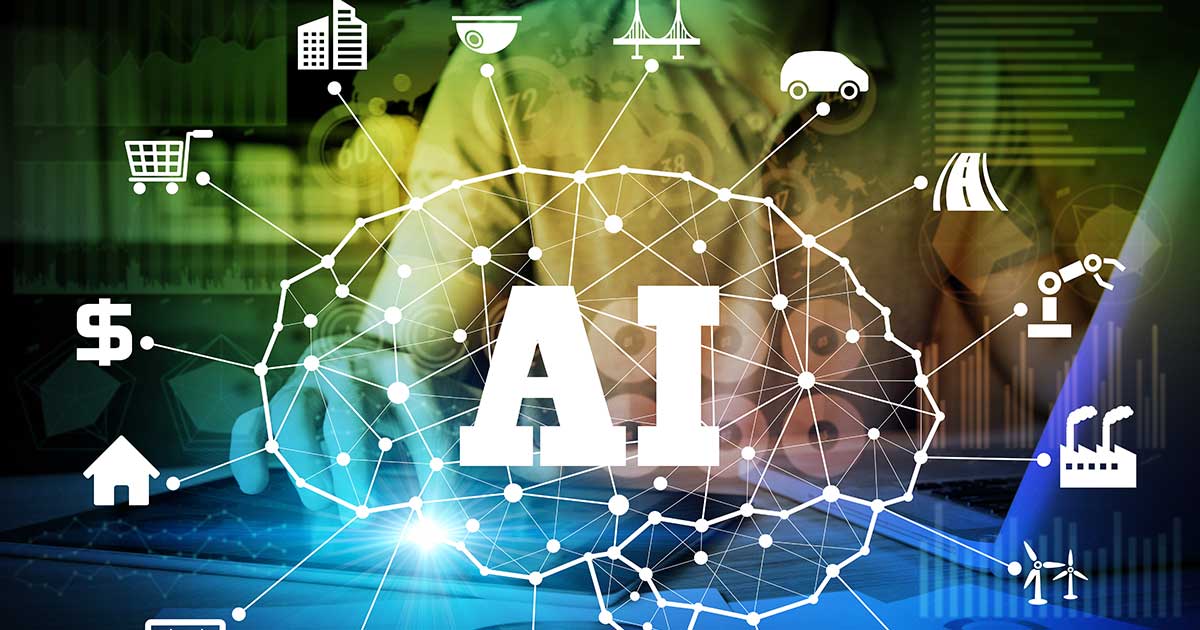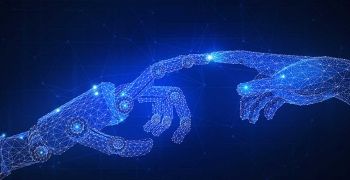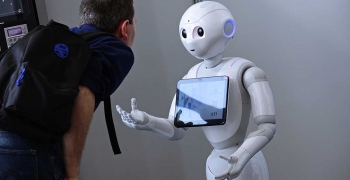Innovations in software algorithms have opened the world to the concept of artificial intelligence (AI). As AI displayed the capabilities of prediction, intelligent assistance, and data-driven recommendation, it empowered enterprises to optimize business efficiencies and increase revenue. Big data analytics and machine learning technologies soon percolated into every organizational function or at least showed the potential to. Forecasts indicate that by 2025, 3D printing cars will roam the streets of the world, reading glasses will be connected to internet, and prescriptions will be handed out by robotic pharmacists. In every case, AI will become an integral part of people’s lives and the choices they make.
AI’s ability to analyze data and self-learn enables it to venture beyond the task-specific roles played by traditional automation technology. Intelligent automation allows repeatable and agile tasks to be executed with anthropomorphic adaptability. While achieving flexible dexterity is still on innovators’ bucket lists, industrial robots are getting better at dynamically adapting to physical environments. Leveraging vision and imitation neural networks, machines can be virtually trained to stack haphazardly arranged blocks. And with computer vision algorithm-powered cameras, robots can sense objects, instead of blindly moving to them and performing the assigned task.
The ability to see makes robots easier to work alongside humans without causing any harm. Such collaborative robots or ‘cobots’ offer three times better performance than conventional robots, and 85 percent more productivity than humans and robots working separately. They can also communicate with other bots to collaborate in busy environments.
Communication and cooperation among robots optimize industrial productivity, especially for completing complex tasks such as multi-arm actions while assembling machine parts or defusing a bomb. AI techniques such as reinforcement learning can help robots communicate for trialing, learning from mistakes, and automatically selecting the best possible approach to complete a task successfully. To ease the time-consuming task of programming and coding each robot, AI-equipped vision systems can be used. The system, armed with sensors and processing power, enables robots to train from visual demonstrations, just like humans.
AI-powered big data technologies enable processing terabytes of information that helps derive patterns. These graphical charts allow engineers to forecast machine failures and guide future decisions. For instance, in an industrial plant, analyzing data from all the different sensors and implementing AI-based condition monitoring helps identify errors before they occur. Predictive maintenance systems can then automatically deploy preventive actions before any disaster actually happens in the factory. This has the potential to reduce inspection costs by 25 percent and annual maintenance costs by 10 percent.
In the oil and gas sector, AI has enabled drones to remotely find the defect location and rectify the problem. The process promises to reduce human intervention in hazardous locations like oil platforms in the middle of the ocean and gas pipelines in deserts, thus improving safety and operational efficiency.
A leading medical equipment manufacturer implemented connected field services (CFS) worldwide to remotely diagnose and correct the instrument malfunction without the need to dispatch a field technician. The company witnessed a 78 percent rise in remote service events, leading to improved service efficiency, productivity, revenue, and customer satisfaction.
In personalized healthcare, AI is poised to usher in some of the biggest disruptions. The technology enables the use of electronic medical records (EMR) for predictive modeling, in turn allowing medical service providers to measure and rationalize the course and prevalence of disease. This deep patient method helped a renowned US hospital predict readmission rates of heart patients and enhance their routine care management.
Combining EMR with routinely monitored biomarkers and IoT-enabled wearables can further enrich healthcare data with the help of AI. The goal is to predict disease exacerbation risk by applying machine-learning algorithms based on disease determinants and identified risk predictors. Physicians will be able to intervene before the patient’s condition worsens, thus improving health outcomes and boosting resource efficiency in hospitals.
With the volume of medical data increasing continuously, deep learning will explore more complex nonlinear patterns in the data using advanced neural networks such as convolution neural network (CNN). By implementing CNN in high-dimensional image analysis, medical practitioners can ensure early disease diagnosis and suggest treatment plans with 90 percent accuracy.
While AI promises to build a brighter, safer, and healthier future, it also displays destructive potential that entrepreneur Elon Musk calls the “biggest existential threat.” To save the world from the AI takeover and bolster economic growth, technological, political, social, intellectual, industrial, and ethical stakeholders will need to establish universal usage guidelines. Meanwhile, engineers will have to focus on AI’s emotional intelligence to help them better understand human requirements. With these steps, AI-powered robots will be all set to improve rather than threaten human lives.




